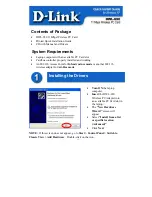
Transmission Line Primer
Jetson AGX Xavier Series Product
DG-09840-001_v2.5 | 133
21.3
Drive Characteristics
Driver characteristics are important to the integrity and maximum speed of the signal. The
following points identify key driver equations and concepts used to improve signal integrity and
transmission speed.
The driver (source) has resistive output impedance Z
S
, which causes only a fraction of the
signal voltage to propagate down the transmission line to the receiver (load).
•
Transfer function at source:
T1
=
Z
0
Z
S
+ Z
0
•
Driver strength is inversely proportional to the source impedance, Z
S
.
Z
S
also acts as the source termination, which helps dampen reflection.
•
Source reflection coefficient:
R1
=
(Z
S
– Z
0
)
(Z
S
+ Z
0
)
21.4
Receiver Characteristics
Receiver characteristics are important to the integrity and detectability of the signal. The
following points identify key receiver concepts and equations for optimum signal integrity at
the final destination.
The receiver acts as a capacitive load and often has a high load impedance, Z
L
.
Unterminated transmission lines cause overshoot and reflection at the receiver, which can
cause data corruption.
•
Output transfer function at load:
T2
=
2
*
Z
L
Z
L +
Z
0
•
Load reflection coefficient:
R2
=
(Z
L
– Z
0
)
(Z
L
+ Z
0
)
Load impedance can be lowered with a termination resistor (R
Term
) placed at the end of the
transmission line.
•
Reflection is minimized when Z
L
matches Z
0









































